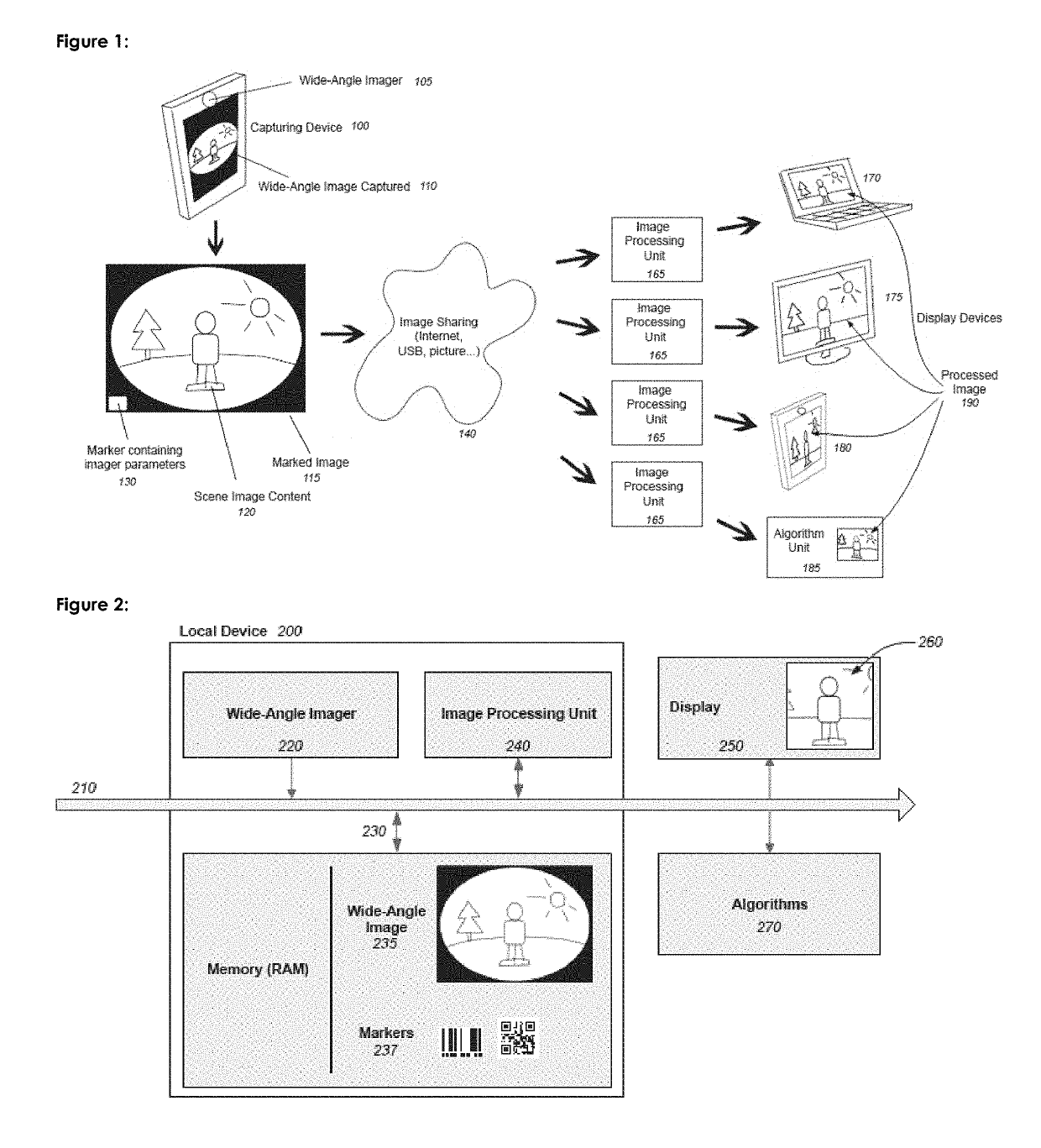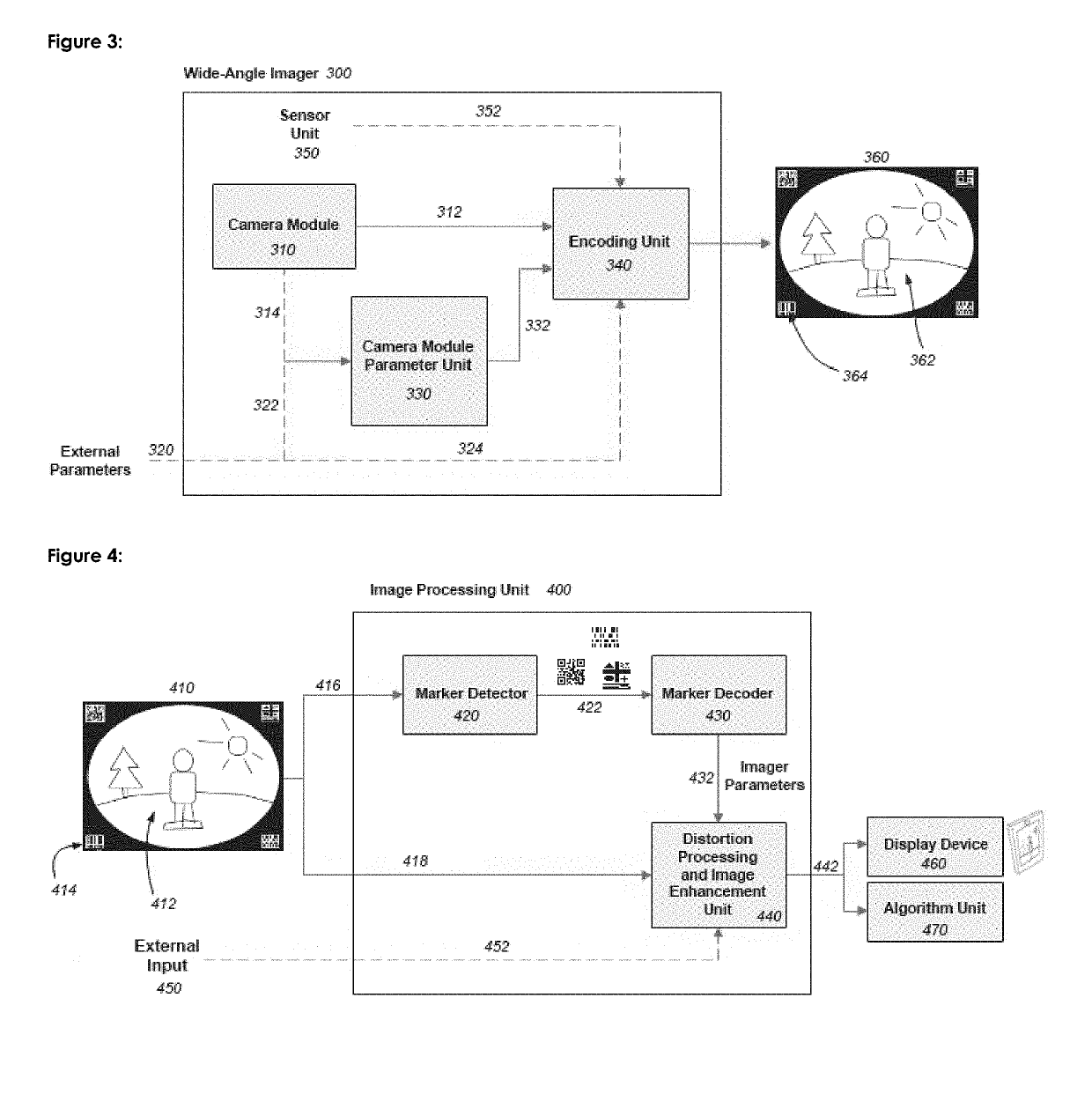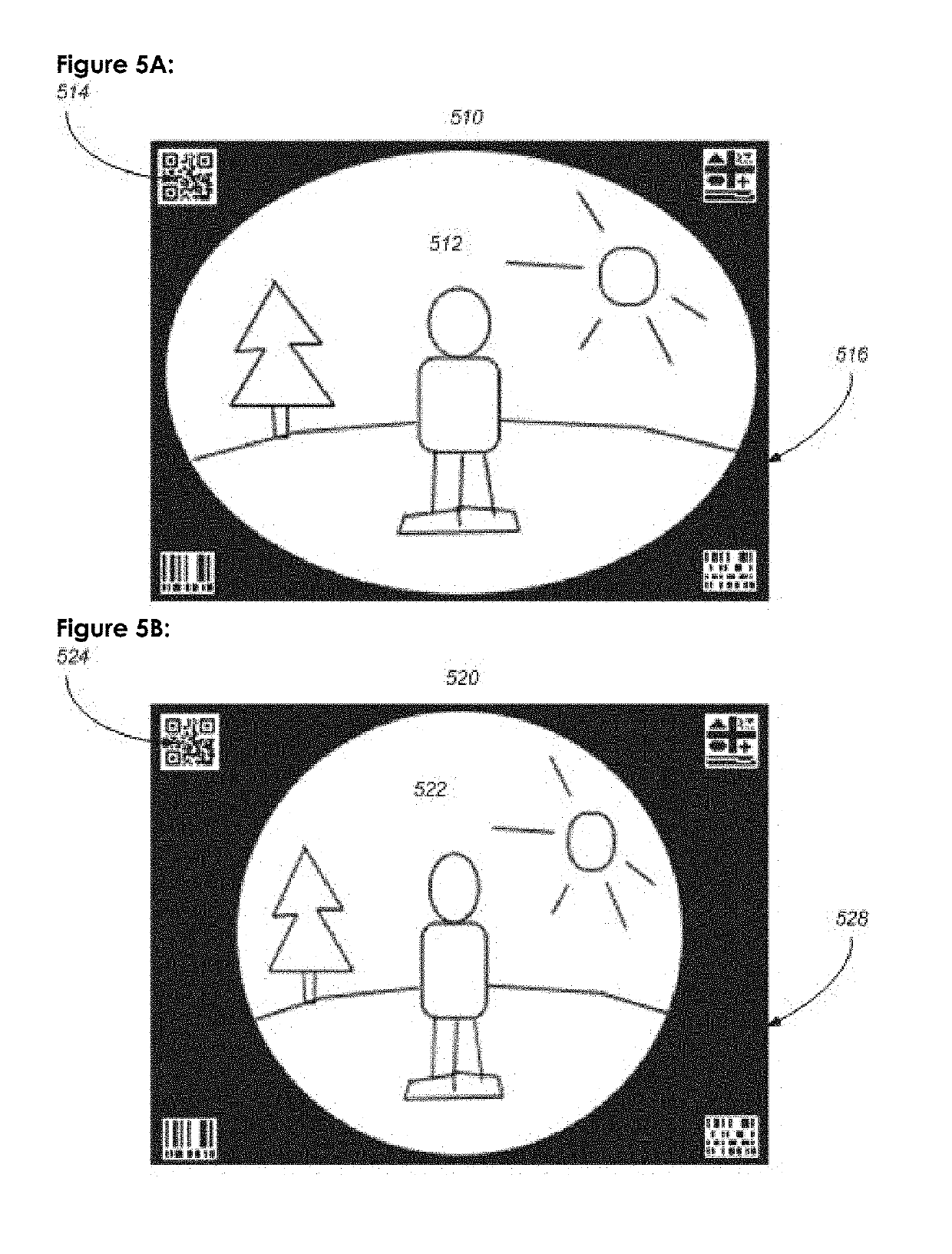Automated definition of system behavior or user experience by recording, sharing, and processing information associated with wide-angle image
a technology of automatic definition and wide-angle image, applied in the field of recording, sharing, and communicating information, can solve the problems of inability to transfer metadata through printed or scanned images, inability to use metadata and the like to transfer information associated with wide-angle images or videos, and the loss of information of metadata
- Summary
- Abstract
- Description
- Claims
- Application Information
AI Technical Summary
Benefits of technology
Problems solved by technology
Method used
Image
Examples
Embodiment Construction
[0036]Certain terminology is used in the following description for convenience only and is not limiting. The terminology includes the above-listed words, derivatives thereof, and words of similar import. Additionally, the words “a” and “an”, as used in the claims and in the corresponding portions of the specification, mean “at least one.”
[0037]The system to define user experience or system behavior can be used for sharing marked images between multiples devices or locally inside a single device. Both cases are schematized at FIGS. 1 and 2, respectively.
[0038]FIG. 1 shows a schematic of the system for transferring imager parameters over a sharing medium to define a user experience or system behavior. The process includes the following steps. A capturing device 100 is built with a wide-angle imager 105. The capturing device 100 is any apparatus on which a wide-angle imager could be added to add wide-angle imaging feature, including for example, but in no way limited to, a mobile phone...
PUM
 Login to View More
Login to View More Abstract
Description
Claims
Application Information
 Login to View More
Login to View More - R&D
- Intellectual Property
- Life Sciences
- Materials
- Tech Scout
- Unparalleled Data Quality
- Higher Quality Content
- 60% Fewer Hallucinations
Browse by: Latest US Patents, China's latest patents, Technical Efficacy Thesaurus, Application Domain, Technology Topic, Popular Technical Reports.
© 2025 PatSnap. All rights reserved.Legal|Privacy policy|Modern Slavery Act Transparency Statement|Sitemap|About US| Contact US: help@patsnap.com



